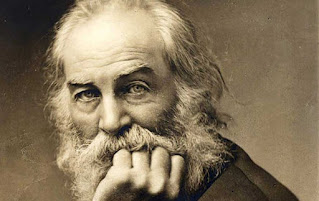Whitman's Use of Imagery in His Poems
Whitman’s poetry
contains a profusion of images and it is truly perceived in almost any of his
poem.
Whitman employs
different types of imagery in his poems and they are galore in order to create the
desires effect. All sorts of images crowd in his poems images of the earth the
sea and the sky night and day hills mountain and rivers nature and animals
images of sex energy and vitality. His long poems like when lilacs last in the
Dooryard Bloom’d or “crossing Brooklyn
ferry’ seem to be made up of a number of
brief descriptions. At a glance they seem chaotic as they flash past the eye in
rapid succession. But in reality they have an implicit pattern. In the poem
‘when lilacs last in the dooryard bloom’d’ we see an abundance of images of the
earth the sky the sea and all that moving in quick succession.
Whitman’s images are
multi faceted they function on more than one level. In all cases he used images
to carry the reader from the world of sensory perception to the world of
thought in which he achieves some perspective. From the sensory he moves to the
metaphysical level. The images are of course continually becoming symbols whose
meanings fluctuate. The bird in ‘when lilacs last in the dooryard bloom’d’ is
grief stricken b y the death of Lincoln but it pours songs whose themes tally
with the thoughts of poet. The stars symbols eternity. It is seen to be
brightly glowing in the western sky signifying the immortality of Lincoln’s
memory and also the eternity of the soul.
Images of vitality and
energy are scattered through the works of Whitman. Whitman’s sensibility and
response to the visible world are expressed clearly through his images. He
seems to be specially fascinated by the essential dynamics of life by the
objects that suggest energy and vitality. His sexual images or erotic images
indicate his quest for vitality.
Grass is a recurring image
in Whitman's poetry. It represents democracy, individuality and kinship with
all.
The image of the
trinity suggests the unity in the universe. All objects of the heaven and the
earth are conceived of as having formed an unity.
Whitman’s images are
lively, ssvivid and impressive.


No comments:
Post a Comment